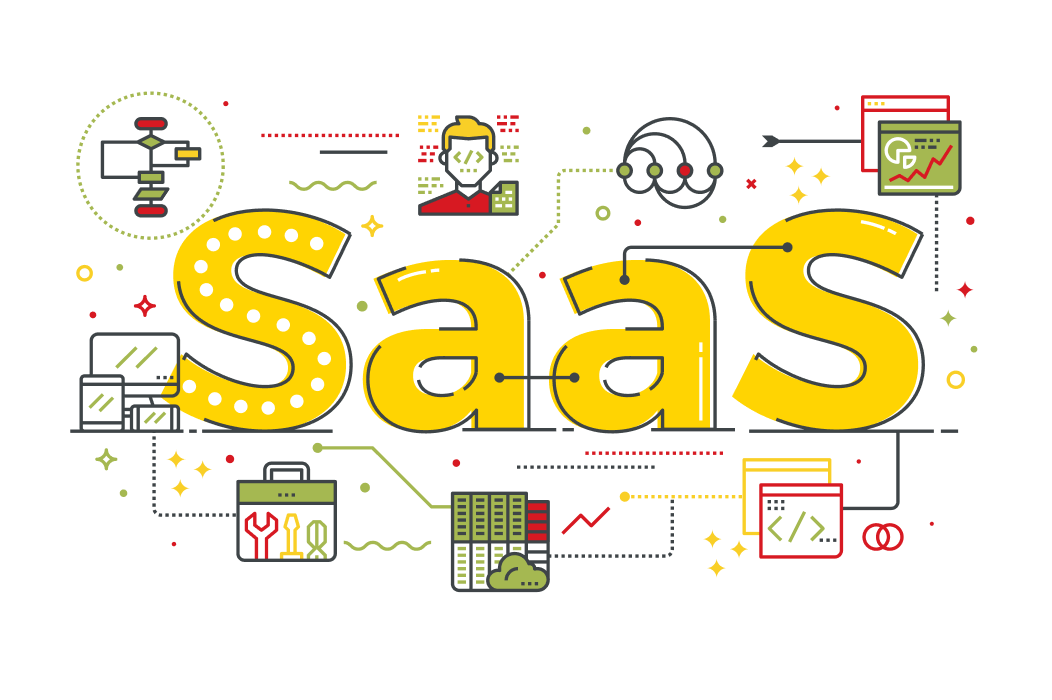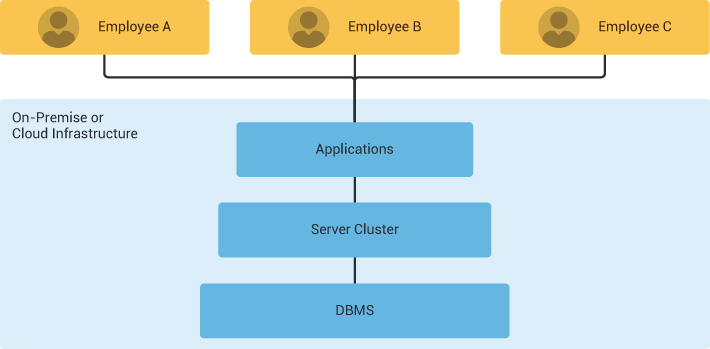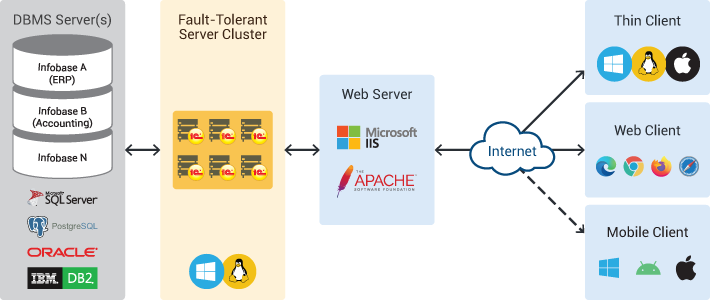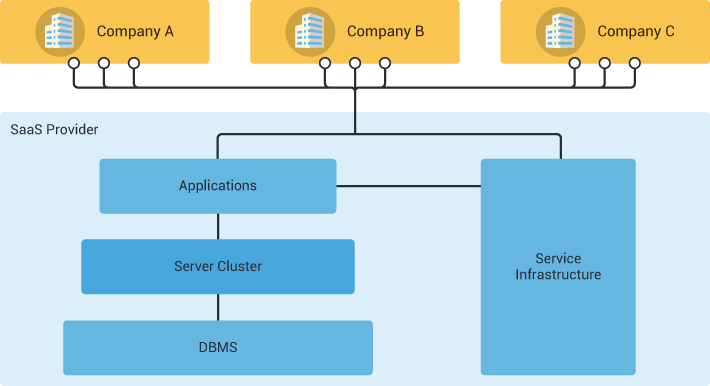
SaaS solutions keep getting more and more popular. Among other reasons, this is also caused by the pandemic and financial difficulties associated with it. Nowadays, companies need to provide a remote workplace for their employees, while a decrease in cash flow draws their attention to more cost-efficient solutions.
By offering SaaS solutions, you help businesses accomplish both goals. On the one hand, customers avoid substantial investments in purchasing servers and licenses, installing equipment and software, as well hiring IT specialists. On the other hand, they grant their employees access to corporate applications from virtually any device in any part of the world.
In this article, we would like to give you an overview of 1C platform cloud technologies and how they can help organize a SaaS. Also, we will present some cases of our cloud ISV partners in the second part of the article to be published soon.
Contents:
1C Platform Cloud Technologies
Customization of 1C Platform SaaS Solutions
1C Applications on a Cloud
Examples of 1C Platform SaaS Solutions
1C Platform Cloud Technologies
The SaaS model means that customers, instead of buying software packages to install on-premise, get access to applications via the Internet and pay software service providers an agreed fee on a regular basis. At that, the software runs in a cloud environment.
1C platform contains all the necessary technologies to create cloud applications, including a server cluster to establish the client-server architecture for multi-user applications, HTTP services to enable applications to communicate with the outer world over the Internet, and data separation technology to use multitenant architecture.
Client-Server Architecture
1C platform offers a client-server architecture for multi-user applications (5 users and more). In this mode, the 1C:Enterprise server cluster takes care of all calculations and business logic. A server cluster is the key platform component that enables users' communication with a DBMS containing application data. This component also ensures scalability, fail-safe behavior, and dynamic load balancing. At that, you can deploy the server cluster either on-premise or on a cloud provider infrastructure.

Access over the Internet
With client-server solutions, users access their applications either with a locally installed client (application interface) or a web browser. The application interface communicates with the server cluster by means of IIS or Apache web server via HTTP or HTTPS.
One of the 1C platform benefits is that applications' source code can instantly run on Windows, Linux, macOS, mobile devices on iOS, Android, Windows, and all popular desktop and mobile browsers without any prior modifications.
Also, thanks to progressive web application (PWA) technology built into the platform, users accessing the applications with a web browser get an experience similar to what they could have with software actually installed on their devices.

Multitenancy
Multitenancy enables several companies (tenants) to simultaneously run one and the same application instance (or infobase) with each tenant using a dedicated share of that instance. As tenants jointly use the infrastructure, the costs become lower. At that, the application applies company-specific business logic to every tenant, as if each company uses a separate application.
A multitenancy model can be helpful for ISVs when the number of 1C infobases is getting to 100. With so many infobases, it is becoming pretty complicated to create new users, grant access to customers, or even simply update or backup data. And one of the best solutions to handle the issues is to find a way to place several isolated areas inside a single infobase.

Building multitenant applications on the 1C platform is possible due to the built-in data separation mechanism that allows keeping data of several non-related companies in a single infobase.
Nevertheless, simple data separation is not enough to build an efficient multitenant SaaS model. You need tools to manage your solution on a daily basis. You have to know about data areas, how they are distributed between companies (tenants), users registered in the system, and their access rights. Moreover, you need to take care of updates, backups, and other maintenance tasks, as well as to build a service portal, and provide customer support.
With these tasks in mind, 1C presents 1cFresh, an out-of-the-box solution that provides everything you need to deliver 1C applications as a service. Also, 1cFresh allows you to set more attractive prices for your SaaS.
| Learn more on multitenancy in 1C:Enterprise |
Customization of 1C Platform SaaS Solutions
One of the fundamental advantages of the 1C platform is customization capabilities, and the same applies to 1C cloud solutions. Developers can customize multitenant SaaS applications using extensions technology built into the 1C platform. Basically, this is a plugin technology that makes it possible to add extensions without modifying core applications. Thus, if a customer needs some additional reports, while others wish to retain standard configuration, all you have to do is develop a small extension to address particular customer needs and attach it to the standard configuration. At that, existing data separation rules apply to all extensions, and other customers will not even know that someone is using one. So, it is effortless to update and maintain multitenant applications.
1C Applications on a Cloud
To provide 1C applications as SaaS, developers should either lease or buy hardware to build the infrastructure, or use infrastructure as a service from cloud service providers.
Building Infrastructure
Prior to buying servers for on-premise use, or leasing dedicated servers in a data center, you have to define the equipment specification. You can do this by estimating the number of users and required functionality (for instance, accountants want to access products and contractor catalog forms, copy and post receipts, write-offs, goods arrival and dispatch reports, and access such document forms).
With 1C Guidelines on Selection of Hardware you can calculate the sufficient equipment capacity including some emergency levels.
Infrastructure as a Service (IaaS)
By using Infrastructure as a Service, you can put the most of your effort into managing your solution without allocating extra time and resources to infrastructure maintenance.
An IaaS provider grants you access to virtual machines, while your responsibility is to install, configure and support your software.
1C Guidelines will also help you set requirements for virtual machines offered by your provider. This includes processors, RAM, storage space, etc.
Examples of 1C Platform SaaS Solutions
AccountingSuite, a cloud solution for accounting, banking, order and inventory management.Rise Accounting, a cloud solution for SMEs to manage accounting, financial reporting & invoicing.
Rise School Management, all-in-one cloud solution that enables schools to access all their data from one system.
FirstBIT ERP, an accounting and finance management software.
FirstBIT Accounting, accounting software with inventory and payroll.
Read also: 3 Great Examples of Delivering 1C Applications as SaaS





